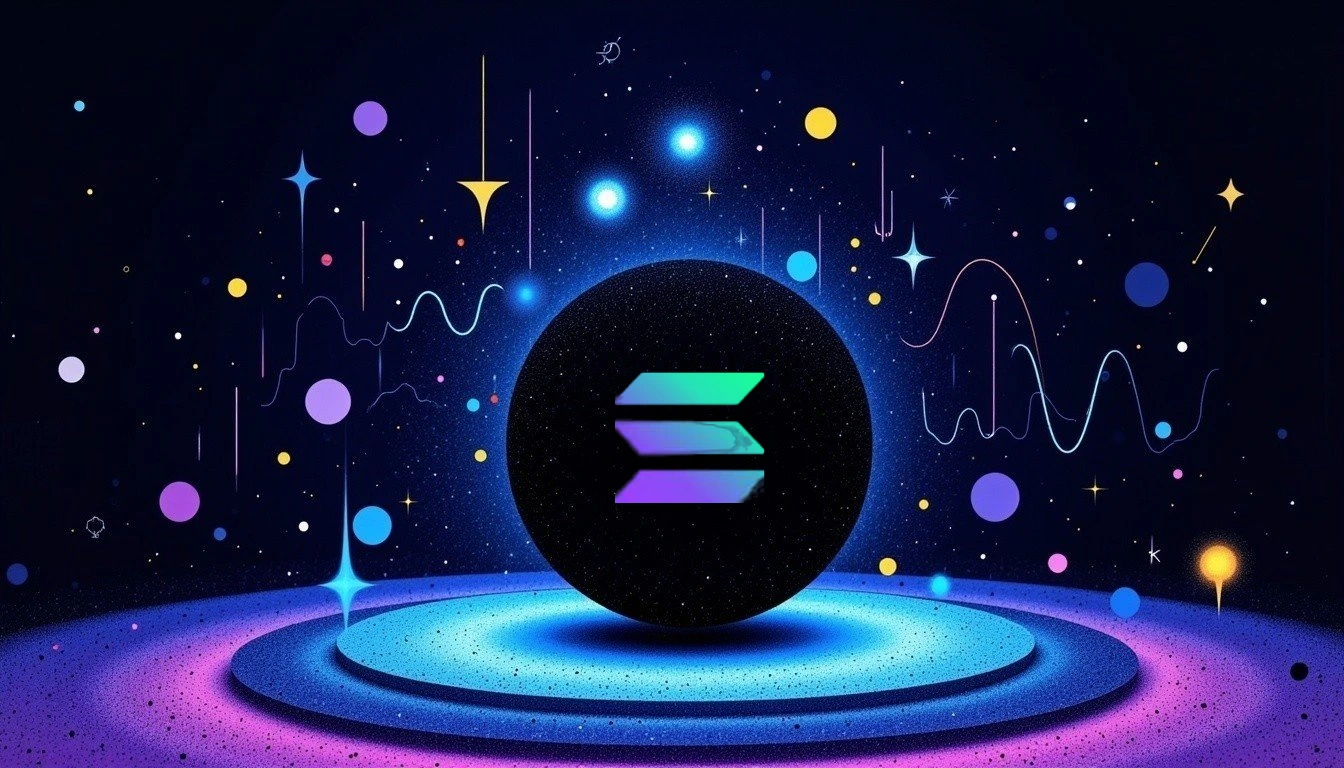Solana initially established itself as a faster and cheaper alternative to Ethereum and has lived up to that title over the years. However, Solana is not the only blockchain that has this goal – several other blockchains today are also doing well.
How is Solana blockchain speed relative to other blockchains? And what Solana ecosystem updates and Solana developer ecosystem trends are helping it hold its title as one of the fastest blockchains? Let’s explore this in more detail.
Solana Network Performance 2025
Solana has shown good dynamics during 2024, becoming even stronger relative to its main competitor Ethereum. In particular, Solana’s YoY performance showed growth of 107.8% and an impressive 5649% relative to Real Economic Value.
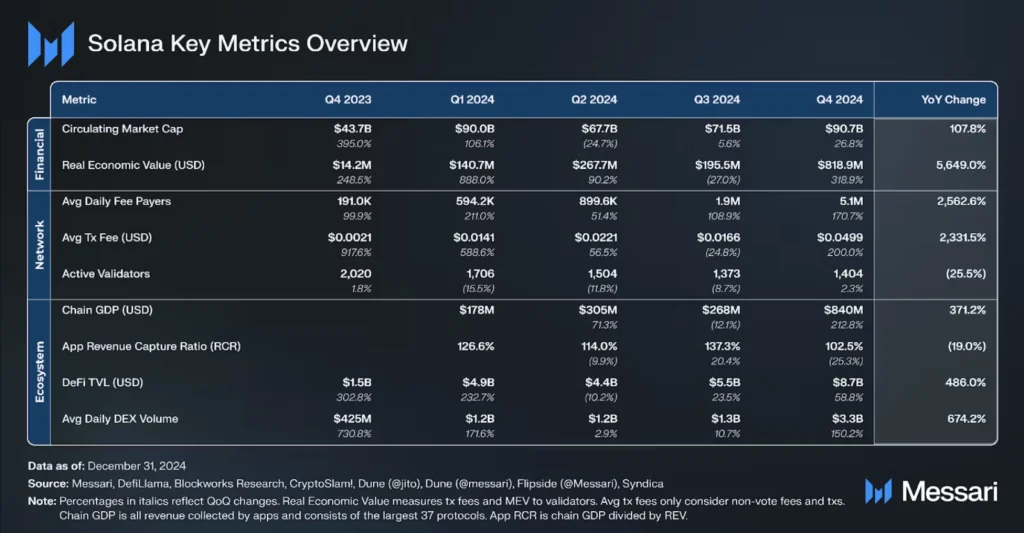
At the same time, we can see how the number of active Solana wallets has grown significantly over the last year, from ~1 million in May 2024 to over 4 million today, with spikes to 6-8 million.
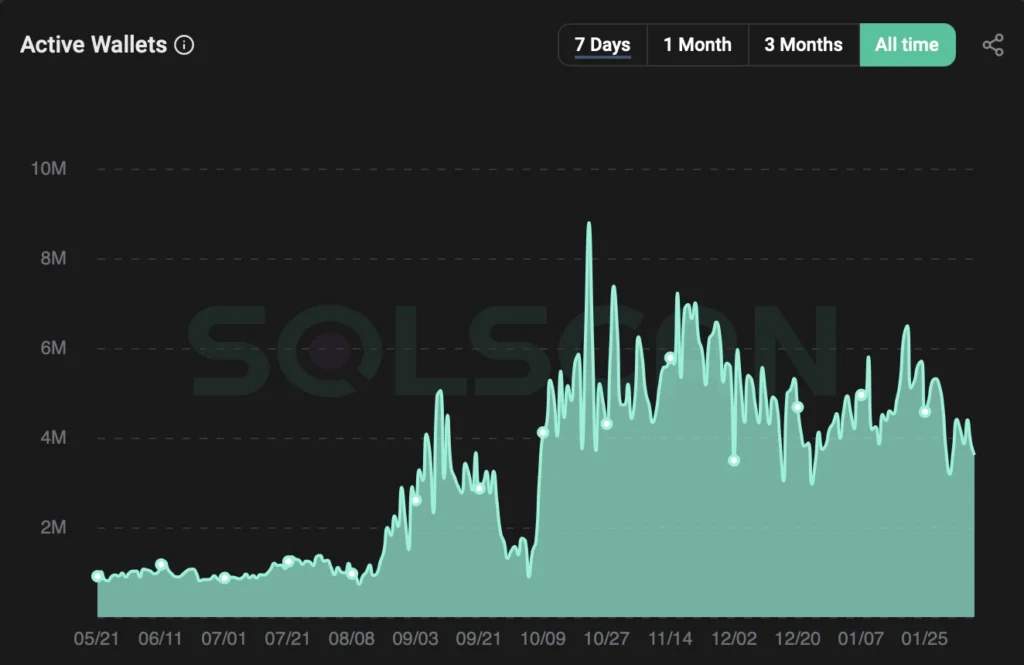
We can also see how transactions have increased from 200 to 400 million, while the Solana TPS benchmark ensures us that Solana transaction speed potentially can reach ~65000 TPS – real TPS has reached a record 4K in 2024.

Solana Developer Ecosystem Trends
Solana ecosystem updates have been very prominent in 2024, and this is another point where it is starting to become an even stronger competitor to Ethereum.
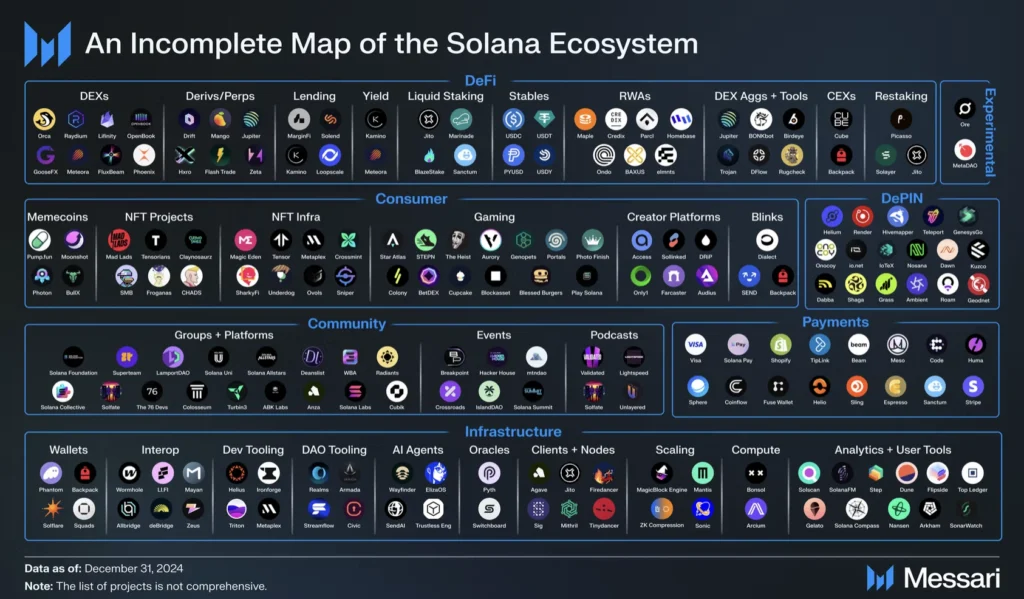
Chain GDP on Solana grew by 213% QoQ from $268 million to $840 million. November was the largest month, bringing in $367 million in revenue to applications on the protocol. Expectedly, the biggest leader was Pump.fun due to the new wave of meme tokens, while TRUMP alone made a lot of noise. To be more specific about the leaderboard we can highlight:
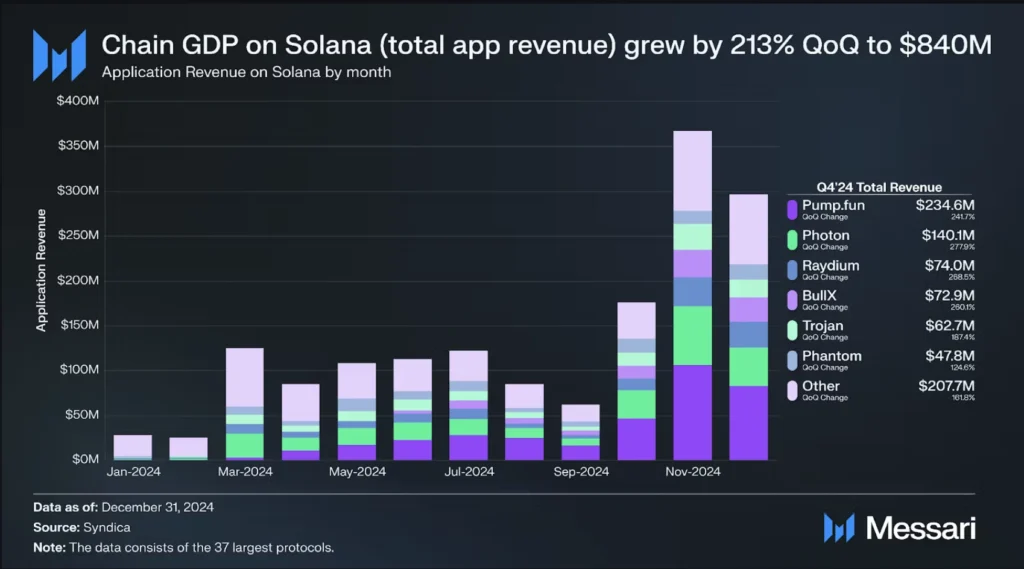
Pump.fun: $235 million (242% QoQ increase)
Photon: $140 million (278% QoQ increase)
Raydium: $74 million (268% QoQ increase)
BullX: $73 million (260% QoQ increase)
Trojan: $63 million (187% QoQ increase)
DeFi TVL on Solana grew by 64% QoQ to $8.6 billion, and leaderboard it the next:
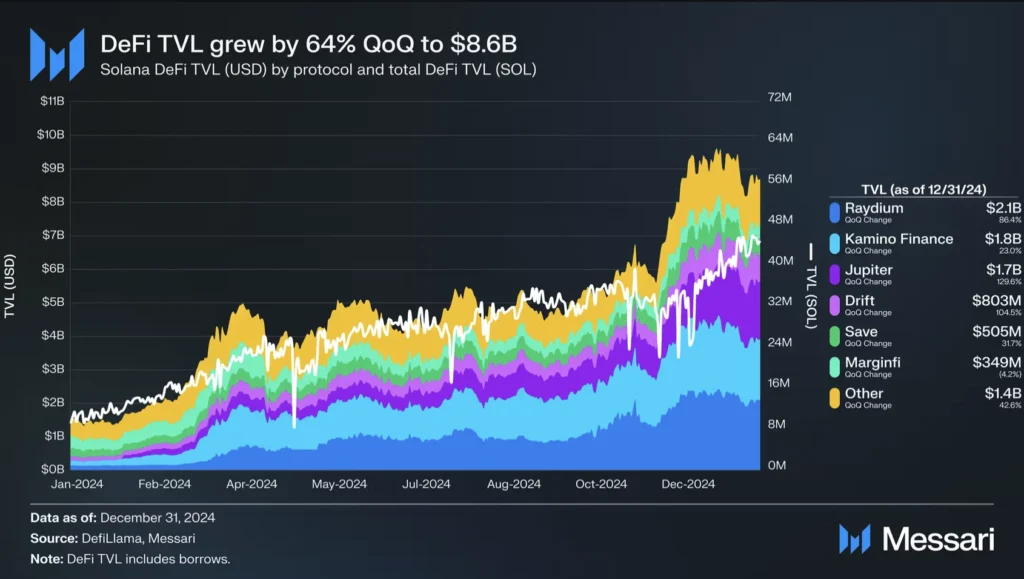
Raydium: 86% growth rate QoQ, ending with $2.1 billion and a 24% market share.
Kamino: 23% growth rate QoQ, ending with $1.8 billion and a 21% market share.
Jupiter Perps: 130% growth rate QoQ, ending with $1.7 billion and a 20% market share.
MarginFi: 40% decrease QoQ, while the protocol’s TVL only fell by 4% QoQ to $349 million – down 55% from $811 million in early April.
Solana vs Competitors 2025
And yet, the battle Solana vs Ethereum 2025 is not finished, and other Ethereum competitors have also shown strong developments and good results.
Sui
When talking about the fastest blockchain 2025, Sui should be mentioned. Its noteworthy approach and interesting architectural solutions enabled it to achieve its 854 TPS. Probably, wondering how fast blockchain technology can be in the long term – Sui implements a Directed Acyclic Graph (DAG), which allows the creation of decentralized immutable networks but bypasses blockchain limitations. Sui combines DAG with Narwhal and Tusk consensus to provide high speed and reliability, becoming one of Solana’s strategic competitors and bringing to the table the battle of two different promising technologies.
Avalanche
Another impressive competitor to Solana is the long-established Avalanche with its impressive theoretical 4,500 TPS and its proprietary Avalanche Consensus Protocol mechanism. This allows Avalanche to offer one of the fastest, most flexible, and secure enterprise-grade blockchains while being independent of Ethereum. This also makes it a direct competitor to Solana, and unlike Sui which is just gaining momentum – well known and respected with a fairly strong community.
BSC
The blockchain from one of the top crypto platforms Binance is also a strong infrastructure player with 380 TPS and Delegated Proof of Stake (DPoS). Yes, 380 TPS doesn’t seem to be the highest compared to Sui and Avalanche, but it is still well above Ethereum with ~22 TPS. Also, BSC has a huge advantage due to its many native features and huge user base on its Binance platform.
Polygon
However, Ethereum is not giving up and is still playing a big role, largely due to its openness and the resulting L2 solutions such as Polygon. This allows them to achieve an impressive 190 TPS while maintaining EVM compatibility and offering NFTs, DApps, and DeFi solutions. Thus, it continues and enhances Ethereum’s ideas of openness and security, preserving the progress that has been made and overcoming the original limitations.
Tron
Tron, which is known not only for its speed but also for being cheap relative to other blockchains, even Solana, is gaining in importance. More specifically Tron reaches 160 TPS and uses the Delegated Proof of Stake (DPoS) protocol. Also due to its high speed and very cheap transactions, Tron becomes an extremely favorable solution for blockchain-backed media and gaming services, which is necessary for a full-fledged transition from Web2 to Web3.
Solana Growth Predictions 2025
It goes without saying that Solana will not be loosening its grip after such a successful year, especially against the backdrop of the pro-crypto regulations we can see today in the US.
As it has worked before, the future of Solana blockchain will likely be in continuous capitalizing on its strengths, namely high speed and relative cheapness of transactions, becoming an even more significant infrastructure player in Web3.
Also, the already demonstrated rapid growth, the Solana DeFi and NFTs 2025 is likely to continue as well, as it is this speed and relative cheapness that is inviting more and more blockchain developers to build their solutions on top of it instead of Ethereum.
However, as we outlined earlier, Solana will continue to have to compete heavily with the already incredibly rich Ethereum ecosystem, its bright successors like Plygon, the potential technical advantages of Sui, and other highly promising blockchains.
Conclusion
It’s worth noting that Solana has come a long way this year, and the numbers speak for themselves.
The architectural decisions and resulting technical advantages they have gained by being one of the first to choose their path despite the openness and availability of Ethereum seem to be paying off more and more.
Of course, not only technical decisions influence Solana’s success, and a lot of things may change this year, at the end of which the leaders may become completely different players. However, for now, Solana is gaining momentum, and the priorities it has set for itself are key for investors and developers.
Stay tuned for important updates, the latest technology developments, and market dynamics to ensure your strategy is grounded and balanced.
Disclaimer: This article is sponsored/guest content and was provided by a third-party. The views and opinions expressed in this article are those of the author. We encourage readers to do their own research before making any investment or trading decisions.
 Join Legends Community
Join Legends Community 